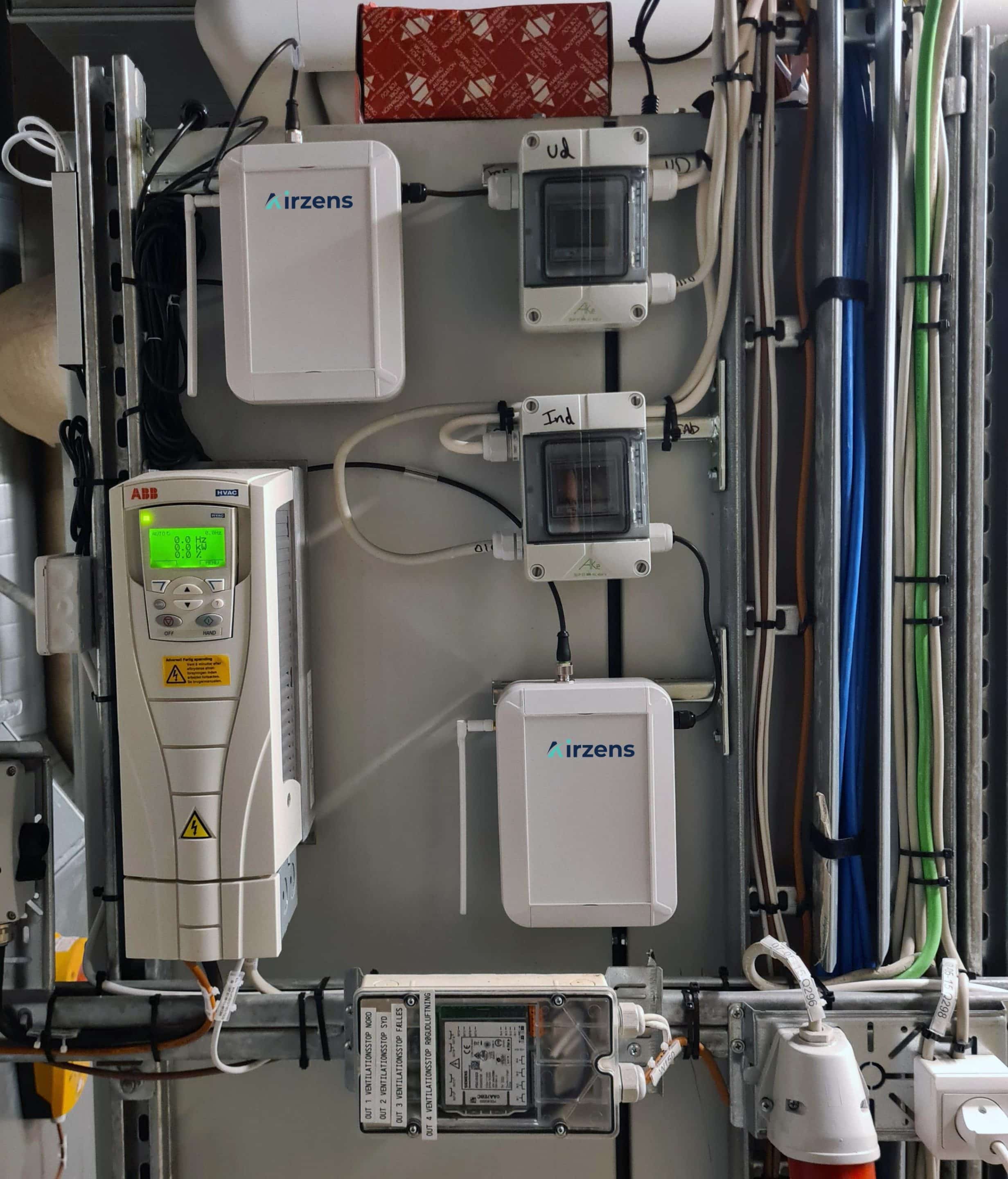Multisens System: Adaptive HVAC optimization.
Reducing energy consumption in buildings requires the delivery of clean, conditioned air exactly when needed and in the required volume, including through recirculation where applicable.
The EPBD legislation mandates that building operators ensure a healthy indoor climate with clean air by adhering to established air quality standards. Within these standards, operators have the flexibility to implement the most cost-effective ventilation solutions, provided they can continuously document compliance with the required clean air quality standards.
Multisens features
Measures air quality across multiple parameters for precise ventilation.
Ventilation is entirely managed through defined clean-air thresholds
Can Integrate with BMS through Airzens hub
IoT option with dashboard interface
Continuously logs data for documentation purposes
Notification function for service and filter cleaning
With the Multisens system, building operators can continuously ensure and document compliance with international indoor climate standards—without the need for manual supervision or system maintenance.
Setting the thresholds:
Multisens is an advanced demand-based clean air delivery system that manages ventilation needs based on a defined clean air standard and related thresholds.
These thresholds are set according to legislative EPBD requirements and international standards such as ISO and WHO.
With the Multisens system, the ventilation can be fully adjusted in terms of supplied air volume and recirculation rate, as long as the air quality remains within the specified thresholds.
Where Samples are taken immediately after the filtration process, the ISO 8 standard (ISO 14644-1) is applied as the minimum performance criterion. In general non-sensitive areas inside buildings, the ISO 9 standard applies.
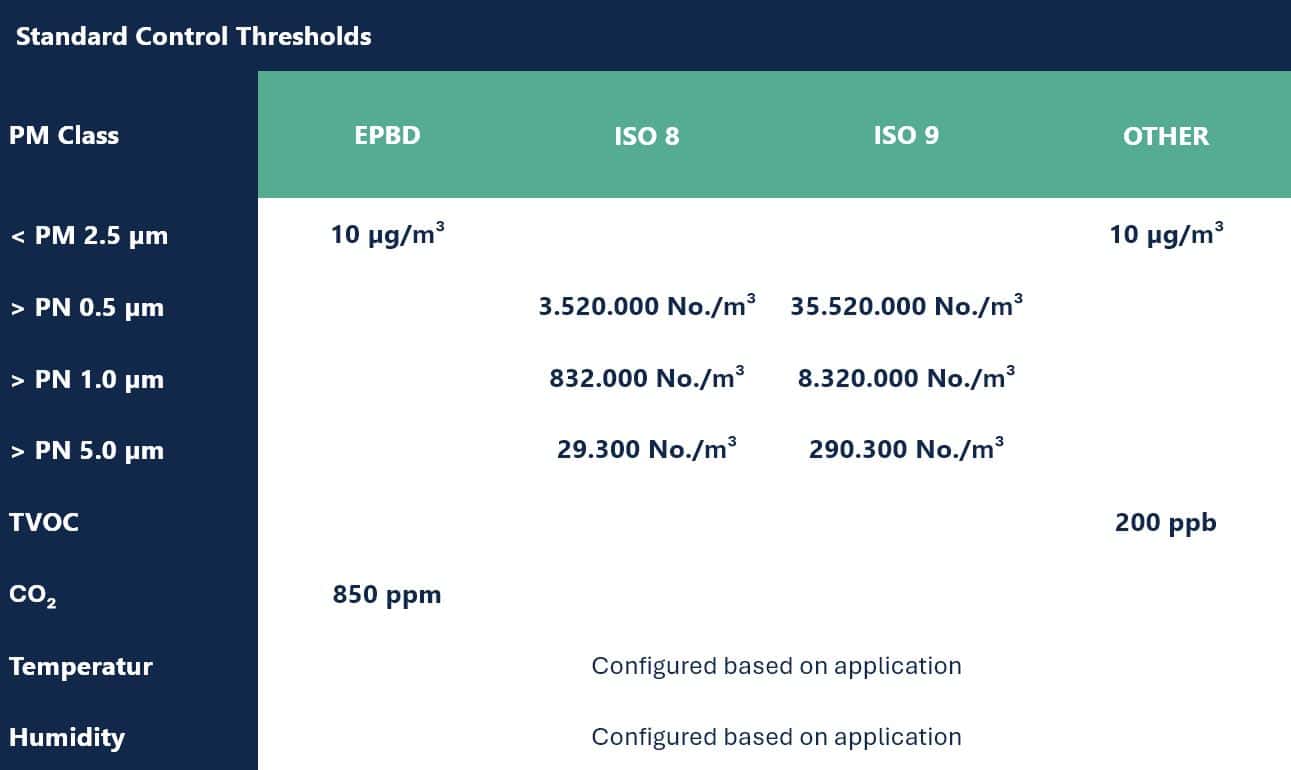
In areas or applications with specific sources of pollution, it is possible to add sensors as required. For example, if a building is located in an airport area, a carbon monoxide (CO) sensor or a >0.1 µm particle sensor could be installed. In other locations, formaldehyde (CH₂O) or ozone (O₃) sensors may be relevant. In such cases, data from these sensors is integrated into the control strategy based on legislative threshold values
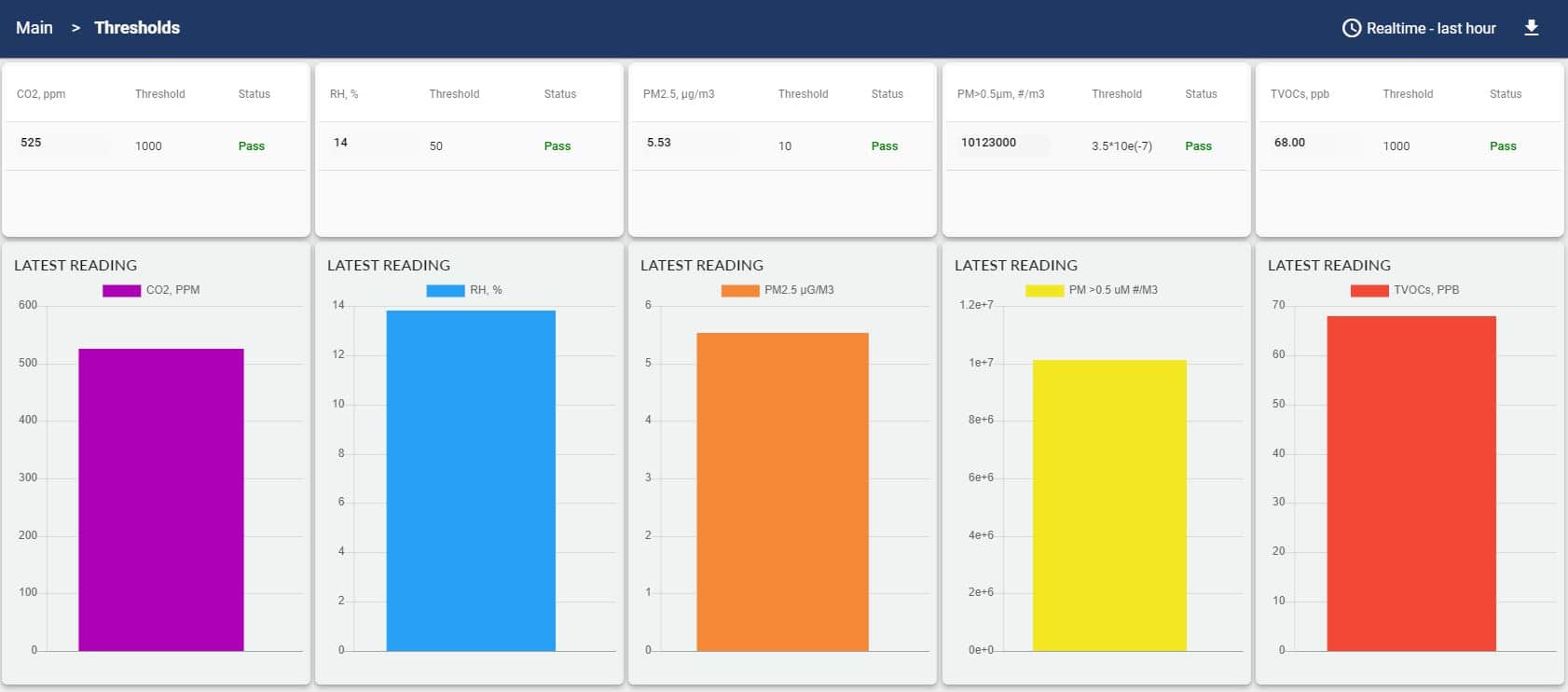
Sensor technology:
Multisens management of ventilation and indoor climates requires high-quality, professional-grade sensors that provide consistent, drift-free accuracy and detect even the slightest changes in air quality at all times.
Multisens combines three advanced sensor technologies to ensure a comprehensive environmental analysis, high safety, and optimal energy efficiency. The system enables data sharing via BMS or the AIRZENS IoT platform, ensuring efficient environmental monitoring as well as the issuance of service notifications and alerts for filter replacement or cleaning
PID-based gas sensors: are designed to detect volatile organic compounds (VOCs) with high sensitivity. They utilize photoionization technology combined with an advanced analog front end (AFE). This enables real-time VOC measurements, which are crucial for enhancing industrial safety, guiding building diagnostics, and ensuring timely replacement of carbon filters, among other critical applications
Laser-Scatter Particle Counter: Utilizes laser diffraction technology to accurately detect and quantify airborne particles from 0.3 µm and above. By converting scattered light into electrical signals via a photoelectric transformer, it provides real-time data on particle concentration and intensity. The sensor is capable of delivering simultaneous output across six channels, ensuring precise and comprehensive particle measurement
Laser-Scatter Particle Mass Sensor. Measures the particle mass of airborne particles smaller than PM2.5. Air is drawn into a measurement cell by a fan, where a laser illuminates the particles. The resulting scattered light is analyzed, and a dedicated algorithm converts the raw signal into real-time data, ensuring accurate and continuous monitoring of fine particulate matter
Sensor node for HVAC systems:
The Airzens nodes can be integrated into any ventilation system, extracting air samples directly from the duct via the inserted speer. The data is transmitted from the node to the cloud and can be linked to the building’s BMS system through a Modbus interface.

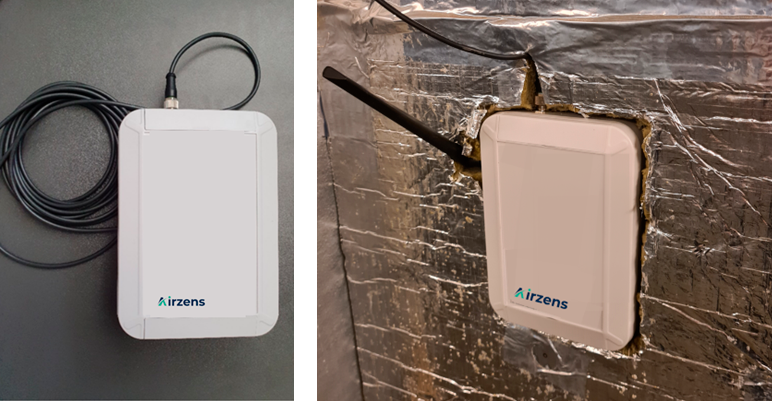
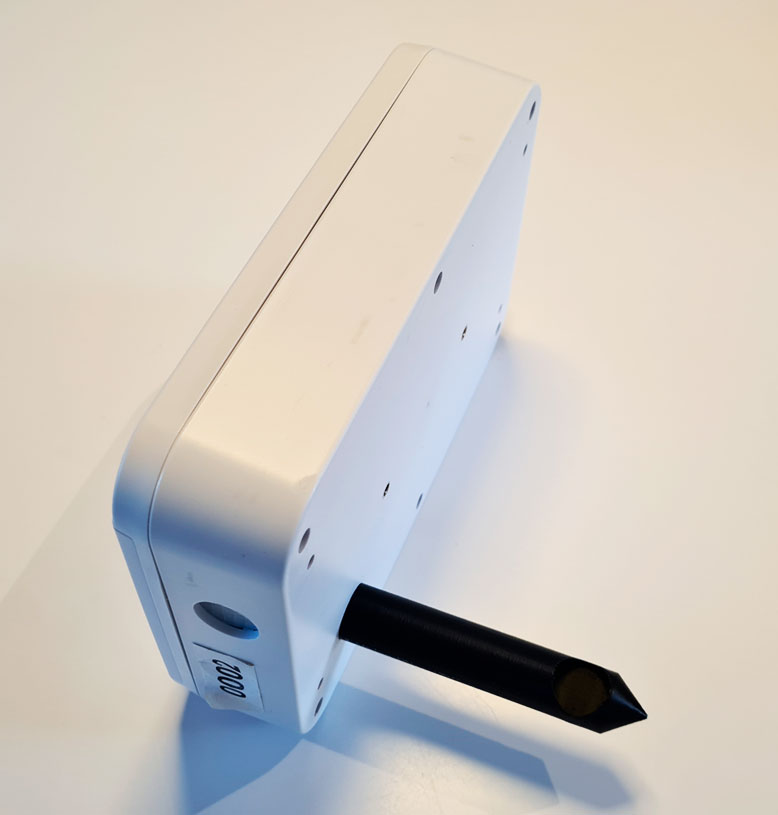
Airzens sensor
The Airzens Sensor Node is equipped with a sampling probe that can be inserted into a duct, enabling it to promptly sample and measure air quality. The sensor node is equipped with a modem and operates as an independent unit, transmitting air quality reports. The collected data is then uploaded to the www.airzens.cloud dashboard.
The airzens.cloud solution makes it possible to monitor and manage the air quality in any building based on ISO 8 standards or other agreed standards of air quality.
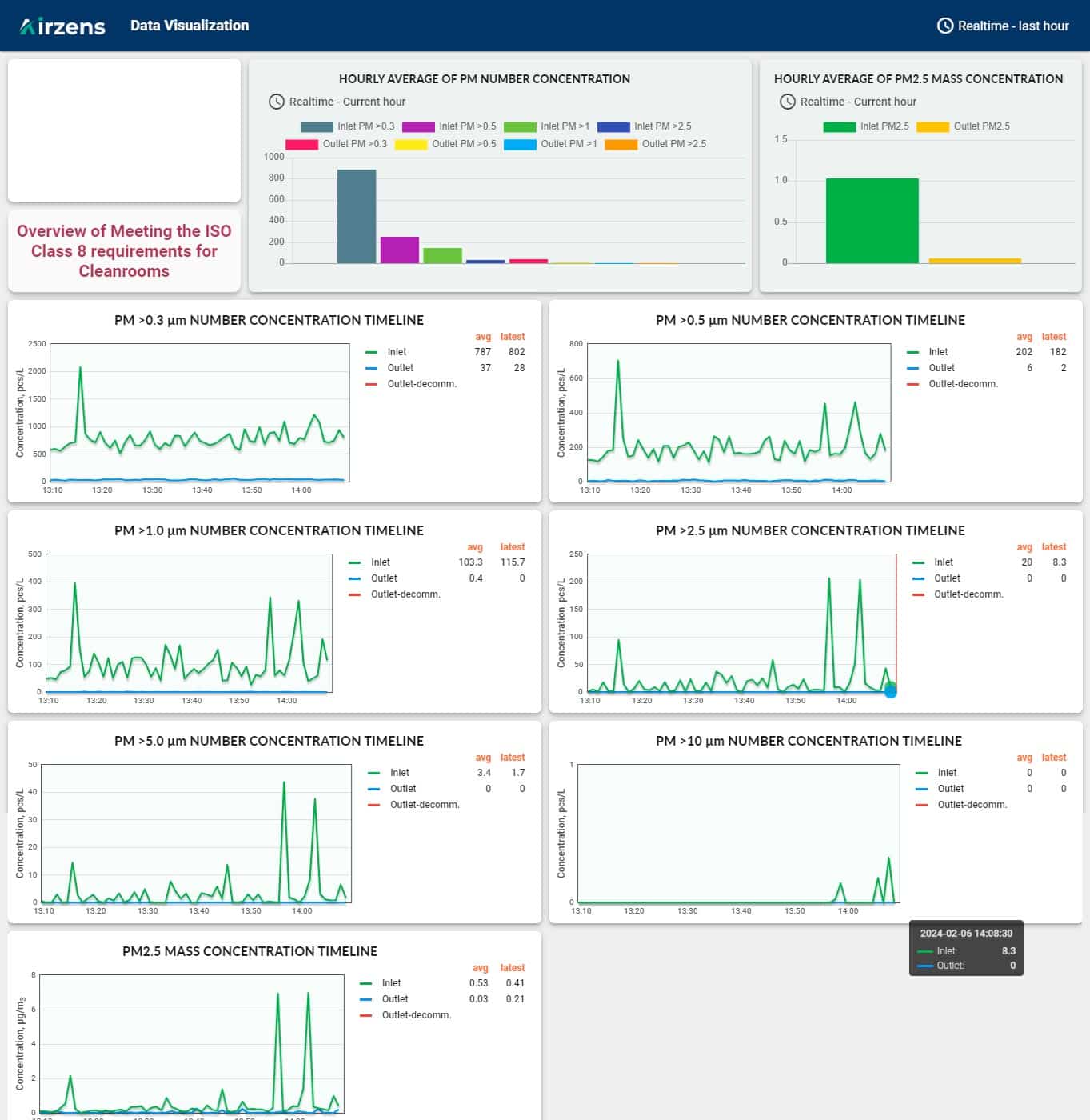
The Airzens professional-grade sensor system goes beyond basic measurements, providing building managers with comprehensive data and analysis to optimize energy usage and ensure a safe environment for building occupants.
The sensor system utilizes state-of-the-art sensor technology to accurately measure multiple air quality parameters, both in the particle and gas phase. The Airzens system can measure ultrafine particles and a number of gases with precise measurements, as well as track energy and CO2 savings.
The Airzens library of professional-grade sensors offers flexibility and scalability to meet the specific needs of building managers. Whether the requirement is additional sensors to monitor specific parameters or expanding the system across multiple locations, a comprehensive range of sensor options is available.
This will enable building managers to gain a deeper understanding of their indoor environment and take proactive steps to improve air quality and energy usage.
By continuously monitoring these metrics, building managers can identify opportunities for energy optimization and track the environmental impact of their building portfolio.
The Airzens system provides real-time data through www.airzens.cloud, allowing building managers to make informed decisions and implement strategies to reduce energy consumption and optimize air quality while minimizing carbon emissions.
Accessing the data collected by our sensor system is made easy through a dedicated dashboard. Building users and managers can securely log in and access the relevant data. The dashboard provides intuitive visualizations, analytics, and historical trends, enabling effective decision-making and proactive maintenance planning. Through the data interface, the system can manage ventilation based on multiple parameters, allowing building managers to customize and fine-tune the ventilation settings according to their preferences.
Monitoring energy and CO2 reductions
Before and after upgrading a building’s ventilation to Airzens, you have the option to accurately assess energy usage and the resulting CO2 reductions.
Energy and environmental data can be tracked via www.airzens.cloud and/or integrate it into the building’s BMS system.
The Airzens energy sensor is a three-phase energy meter featuring a backlit LCD display and an integrated touch keypad. It is specifically designed for active energy measurement in applications up to 65 A (direct connection). This versatile meter can measure both imported and exported energy, offering additional features like pulse output, an RS485 Modbus port, and an M-bus port.
It is suitable for DIN-rail mounting and provides IP51 front-degree protection. For imported energy, optional legal metrology certification is available (PF option).
(Certified according to MID Directive, Module B and Module D of Annex II, for legal metrology relevant to active electrical energy meters (see Annex V, MI003, of MID). Can be used for fiscal (legal) metrology.)
[Picture: Installation at a hospital in the Copenhagen region]
